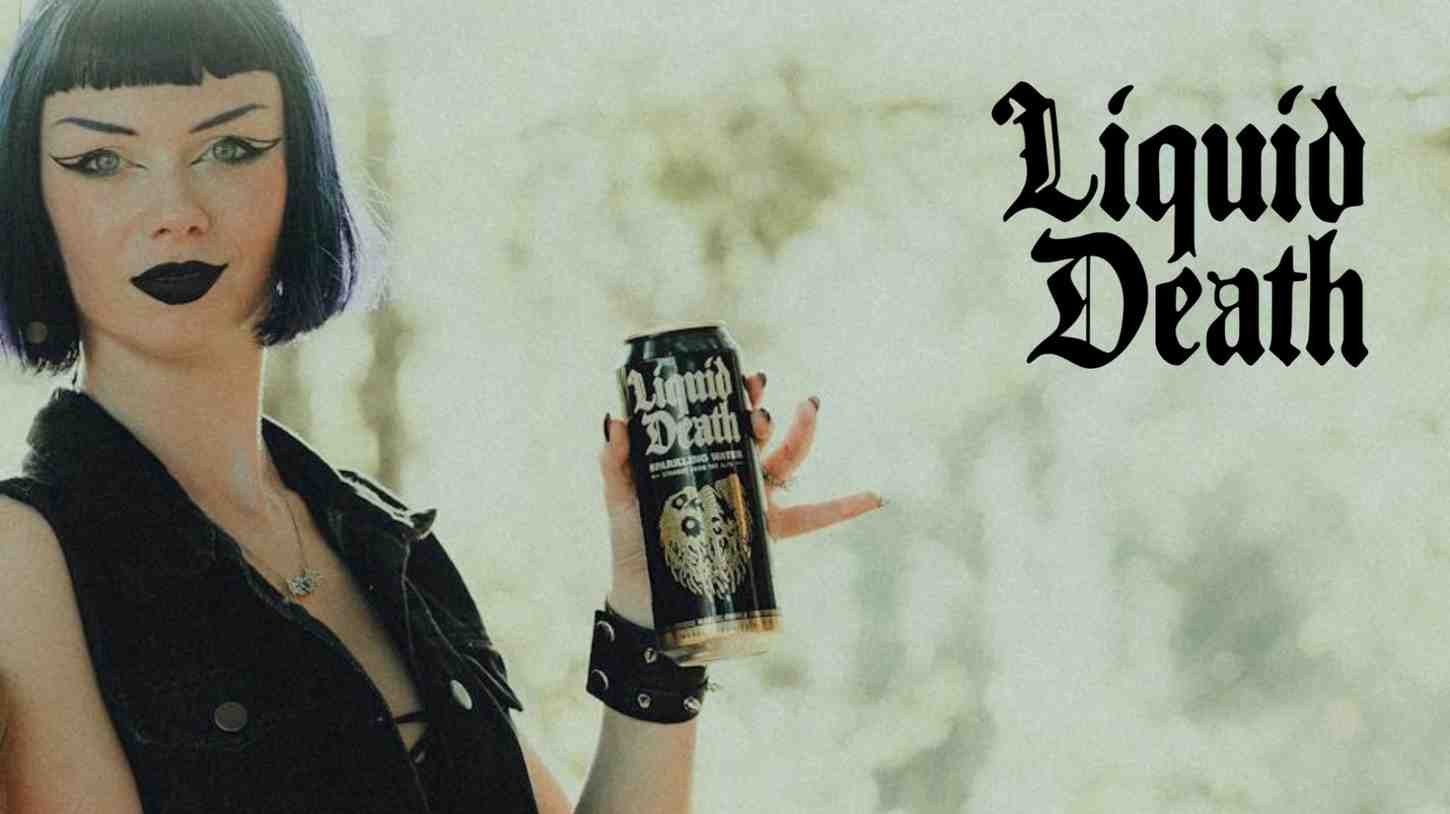1. From Concert Halls to Canned Water — How Liquid Death Was Born
The origin story of Liquid Death feels more like a rock legend than a startup tale. Inspired by a 2009 Warped Tour observation — musicians sipping out of Monster Energy cans to stay hydrated — the founder envisioned a water brand that looked like a hardcore drink.
The venture officially took shape in late 2018 under Supplying Demand, Inc. Early marketing wasn’t cautious — a video ad launched before the actual product existed, racking up millions of views and validating demand before production.
Seed rounds followed: a $1.6M raise, then $9M in Series A, then $23M in Series B, with backing from players in media, lifestyle, and music event spheres.
That early gamble—mixing music culture, edgy branding, and guerrilla marketing—became the foundation of everything to come.
2. Strategy That Slain the Competition: How Growth Was Engineered
Liquid Death’s path to stardom wasn’t just bold branding. It married razor-sharp strategy with brave execution.
2.1 Branding With Bite
Rather than lean into purity, nature, or health (as typical water brands do), the identity screams metal, irreverence, rebellion. The can design looks more like a beer or energy drink can than a water label. The tagline “Murder Your Thirst” and skull motifs push that contrast.
2.2 Marketing as a Product
Liquid Death treats its content like another product line. Rather than buying heavy TV spots, most spend goes into social video, stunts, pranks, and surprise drops—crafted to go viral.
Examples:
-
Turning hateful comments into death metal albums
-
A fake “kids going berserk” ad parodying alcohol ads
-
Launching limited-drop merch—think candles, dolls, edgy promo stunts
2.3 Tactical Channel Expansion
The rollout was staged carefully:
-
Direct-to-consumer/web sales allowed control and validation.
-
Selective retail via Whole Foods and 7-Eleven in markets to test.
-
Event & venue integration via partnerships with Live Nation, placing the brand in concerts and festivals (in front of its target crowd).
-
Broad retail scaling into supermarkets once brand equity and demand were proven.
That phased approach reduced risk, built cult loyalty first, then broadened reach.
3. Where Liquid Death Stands Today
Today, Liquid Death is far beyond a “novelty water brand.”
-
Reported retail sales in one recent year reached $263 million.
-
Its valuation soared to $1.4 billion in the latest funding round.
-
It dominates online marketplaces—ranking among top-selling still/mineral water listings on Amazon.
-
Product range has expanded:
• Sparkling flavored waters (e.g. Convicted Melon, Severed Lime)
• Iced tea lines with playful names like Grim Leafer or Dead Billionaire. -
The brand has teased an upcoming energy drink line—100 mg caffeine, no sugar, keeping with the edgy yet clean image.
-
In some markets, international expansion paused due to supply-chain limitations—UK operations, for instance, have been scaled back.
In short: Liquid Death has evolved from cult curiosity to serious player, all while maintaining attention-grabbing identity.
4. Public Response: Cult Love, Skeptics & Surprises
Public reaction has been a rollercoaster, leaning heavily toward fascination with a dose of skepticism.
What people love:
-
The boldness — consumers often say they bought just because it was weird and fun.
-
The visual identity — in saturated beverage aisles, it stands out like nothing else.
-
The purpose angle — the “Death to Plastic” message (aluminum over plastic) resonates with eco-aware audiences.
Critiques & doubts:
-
For some, the name Liquid Death is too gimmicky or even off-putting for water.
-
Questions about whether the environmental claims (switching to cans) outweigh carbon footprint of production and transport.
-
Skeptics see the brand more as performance art than a serious water company. On a Reddit thread:
“They market and think of themselves as an ‘entertainment company’ that sells water.”
Even with those criticisms, the brand seems to thrive on divided opinions — controversy creates buzz, and buzz fuels growth.
5. Untold Secrets & Surprising Moves
Some lesser-known or eyebrow-raising facts add color to the Liquid Death narrative:
-
Selling a belt diaper: In a wild crossover, Liquid Death teamed with Depend to release a black faux leather “concert diaper” aimed at fans who didn’t want to leave the mosh pit. It sold out fast.
-
Jet giveaway: A promotion promised a fully operational retired fighter jet as a prize—the brand insisted it was real, not a gimmick.
-
Blood-infused skateboards: Tony Hawk, longtime backer, had limited-edition decks painted with a drop of his blood.
-
Embracing haters: Hate comments were mined and turned into death-metal tracks. This defiant twist turned negative feedback into brand storytelling.
-
Iconic logo origin: The skull logo came from a DM pitch to Adult Swim’s Will Carsola, who sketched it.
These stunts are more than PR gags—they reinforce the brand’s commitment to unpredictability and attention dominance.
Overall Verdict: Liquid Death — Disrupter or Flash in the Pan?
Liquid Death’s trajectory proves that a commodity like water can be reimagined through storytelling, identity, and daring marketing. Its growth isn’t just hype — the numbers back serious traction in retail and online.
Strengths lie in unforgettable branding, viral-first tactics, and alignment with younger, value-driven consumers. Risks include overrelying on stunt culture and potential backlash or fatigue.
Nonetheless, Liquid Death remains one of the most fascinating modern brand experiments — it teaches that even plain water can murder expectations, if positioned boldly enough.

